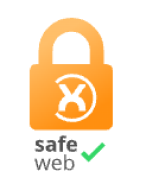Nowadays, the consumer goods industry is constantly evolving, and one of the main challenges it faces is the need to provide consumers with detailed and transparent information about the products they buy. To address this challenge, GS1 Digital Link technology can be a very useful tool, enabling companies to connect their products with digital information and services through a single 2D barcode.
USEFULNESS OF 1D AND 2D CODES
The main difference between a 1D barcode and a 2D barcode is the amount of information they can contain.
A 1D barcode, also known as a linear barcode, can only store information in one dimension, i.e. along one line. It consists of bars and spaces of different widths that represent numbers or alphanumeric characters. 1D barcodes are commonly used to identify products and track inventory in retail stores and warehouses.
On the other hand, a 2D code can store information in two dimensions, which means that it can contain much more information than a 1D barcode. 2D codes use two-dimensional patterns, such as squares, circles, and other geometric designs, to store information. This allows not only numbers and alphanumeric characters to be encoded, but also images, web links and other more complex information. 2D codes are commonly used for advertising, logistics, personal identification, among others.
While it is true that 2D codes offer advantages over 1D codes in terms of information storage capacity and flexibility, 1D codes are still widely used and are important for product identification and tracking in the supply chain and at retail. 1D barcodes are also cheaper and can be read by less sophisticated barcode readers.
WHAT IS THE GS1 DIGITAL LINK?
GS1 Digital Link is a new technology developed by GS1 that enables companies to connect physical products with digital information and online services through a single barcode or QR code. It is a global standard that uses GS1 identifiers (such as GTIN, GLN or SSCC numbers) to create a unique digital link for each product.
GS1 Digital Link is a simple, standards-based framework that encodes information into 2D codes and then makes that information part of the network, so that consumers, retailers and anyone in the supply chain more generally can access a wealth of product information that can be updated and controlled by the brand itself.
Do you find it interesting? SUBSCRIBE TO OUR NEWSLETTER!
ADVANTAGES OFFERED BY THE GS1 DIGITAL LINK
The use of GS1 Digital Link offers numerous benefits to the industry, including the following:
- More information: A conventional 2D code has limited information storage capacity, while the GS1 Digital Link allows for more information such as product identity, manufacturer’s information, expiration date, product location, etc.
- Flexibility: The GS1 Digital Link is a unique and global identifier that allows connection to multiple sources of information related to the product, such as web pages, videos, documents, images, among others, which provides great flexibility in terms of the content that can be linked.
- Accessibility from any device: The GS1 Digital Link is a code that can be read by any device connected to the internet, including smartphones, tablets and computers. This means that anyone with an internet-connected device can access the information contained in the code, making it much easier for consumers to access additional information about a product.
- Traceability: The GS1 Digital Link can include product tracking information throughout the supply chain, enabling tracking and control of product movements, which can be useful for logistics, security and traceability purposes.
- Image: The use of the GS1 Digital Link can also improve sustainability and corporate social responsibility.
To sum up, the GS1 Digital Link brings greater advantages than a conventional 2D code as it allows for a greater amount of information, flexibility in linked content, accessibility for consumers and product traceability.
Undoubtedly, the market is becoming more and more digitized and information. Barcodes are no exception. We have been seeing them in our daily lives since the 1970s. From 1D to 2D and now to GS1 Digital Link.
If you are interested in identifying your packaging with barcodes that meet GS1 global standards, contact us to find the solution that best suits your needs.
CONTACT US






